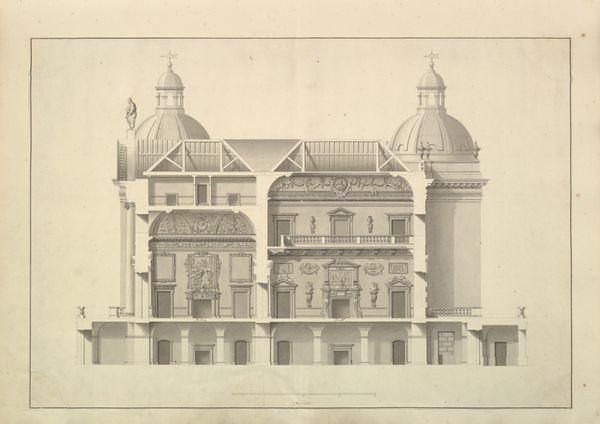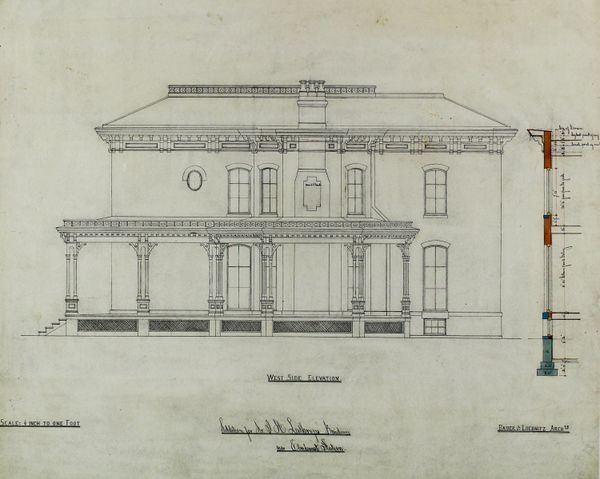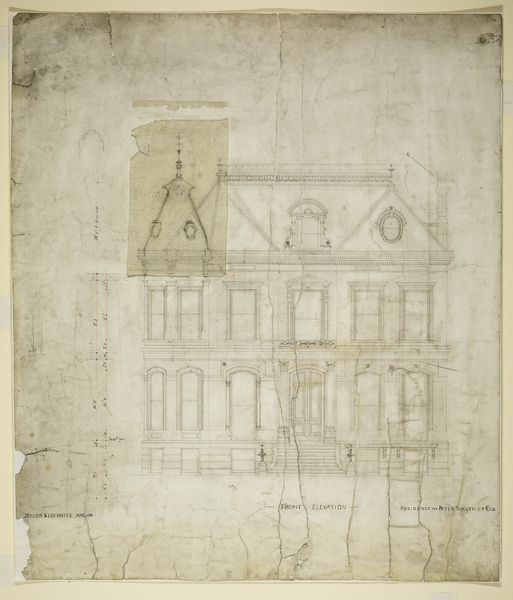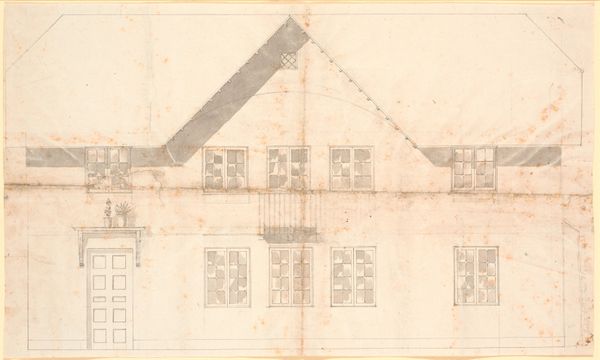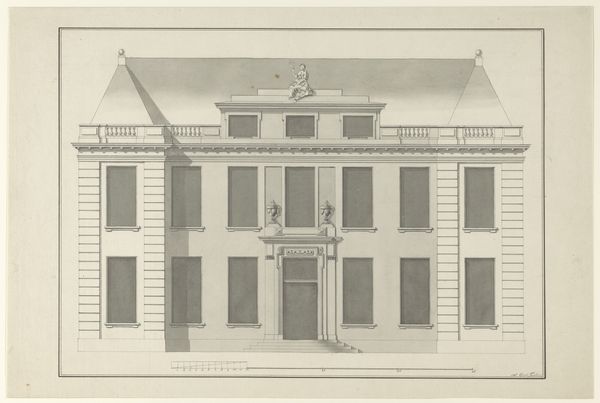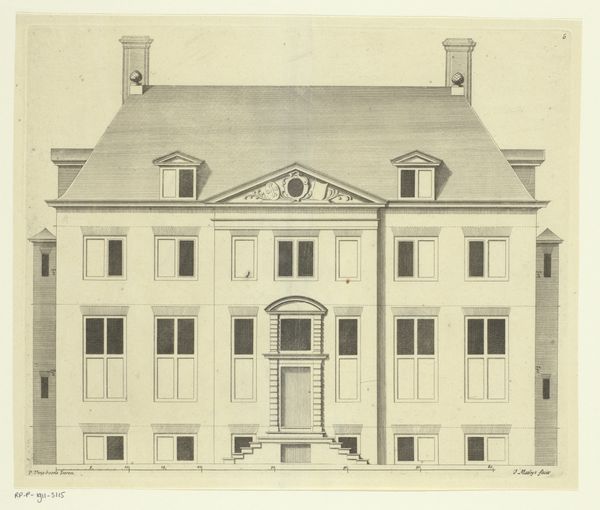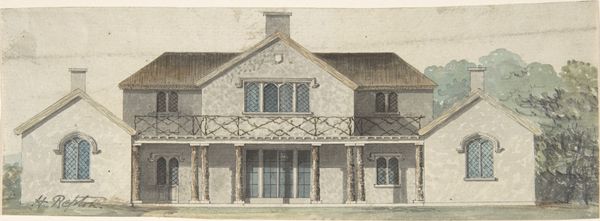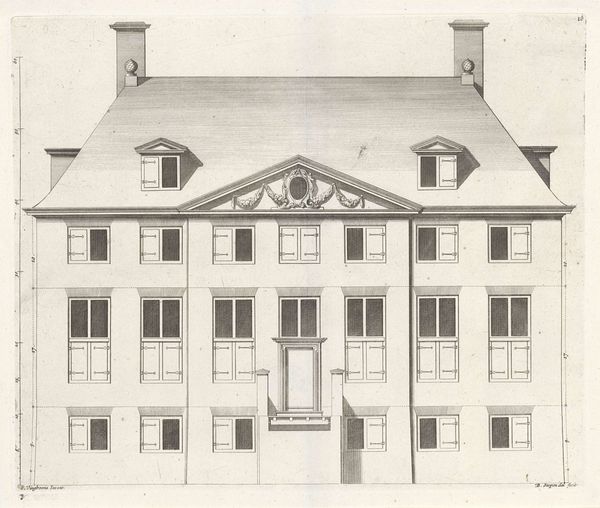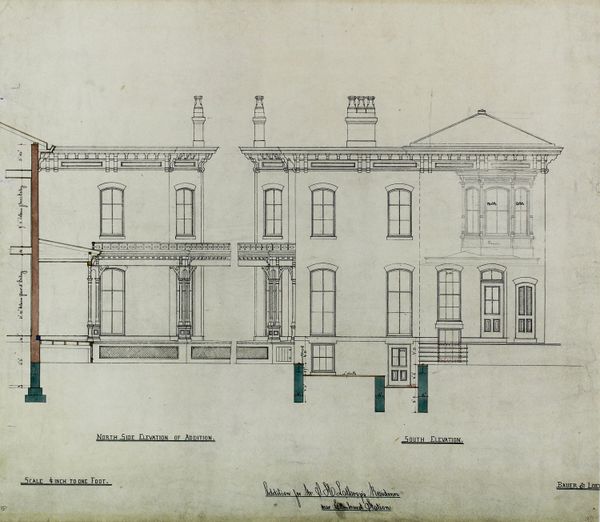
Eliphalet W. Blatchford House, Chicago, Illinois, LaSalle Street Elevation and Partial Section 1873 - 1875
0:00
0:00
drawing, paper, ink, architecture
#
tree
#
drawing
#
landscape
#
paper
#
historic architecture
#
11_renaissance
#
ink
#
arch
#
cityscape
#
street
#
watercolor
#
architecture
Dimensions: 51 × 63 cm (20 1/16 × 24 13/16 in.)
Copyright: Public Domain
Editor: So, here we have Peter Bonnett Wight's drawing from 1873-1875, "Eliphalet W. Blatchford House, Chicago, Illinois, LaSalle Street Elevation and Partial Section," a rendering in ink and watercolor on paper. It feels so precise, but almost dreamlike at the same time. What catches your eye? Curator: Well, beyond the impressive architectural detail, consider the choices Wight made. He's presenting more than just a house; he's presenting an aspiration. The rendering becomes a symbolic stand-in for the family’s social standing and cultural aspirations, evoking European precedents through carefully selected architectural symbols. Notice the tower. Editor: It definitely draws the eye upward. Why is that significant? Curator: Towers historically represent power and visibility, right? So placing one atop a domestic space subtly transforms the idea of home. What might that mean for the inhabitants, consciously or unconsciously? And the interplay between the precisely rendered architectural elements and the softer watercolor washes – what stories do those choices tell? Editor: It’s like he’s using both hard and soft symbols to build up the image of this house. The watercolor almost makes it feel romantic. Curator: Precisely! Think about the cultural moment. The Blatchford family's wealth provided social and cultural cache. How is that translated into material form here? How might later viewers perceive the house and, by extension, its owners, based on these coded visual cues? Editor: It is interesting to consider all the different interpretations in this. I'll definitely look at architectural drawings in a new light from now on! Curator: Indeed, art invites these intricate multilayered explorations. Thank you for guiding our perception and appreciation.
Comments
No comments
Be the first to comment and join the conversation on the ultimate creative platform.

